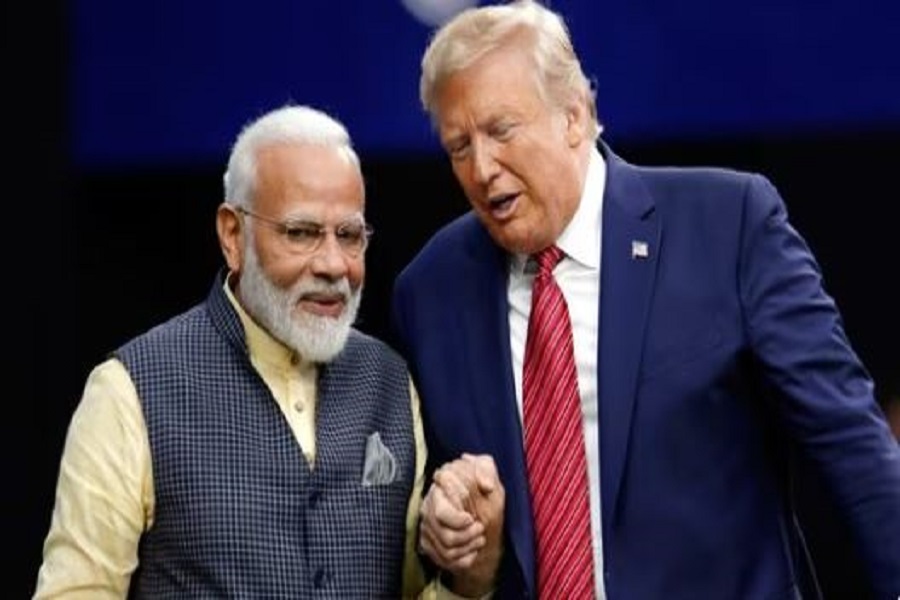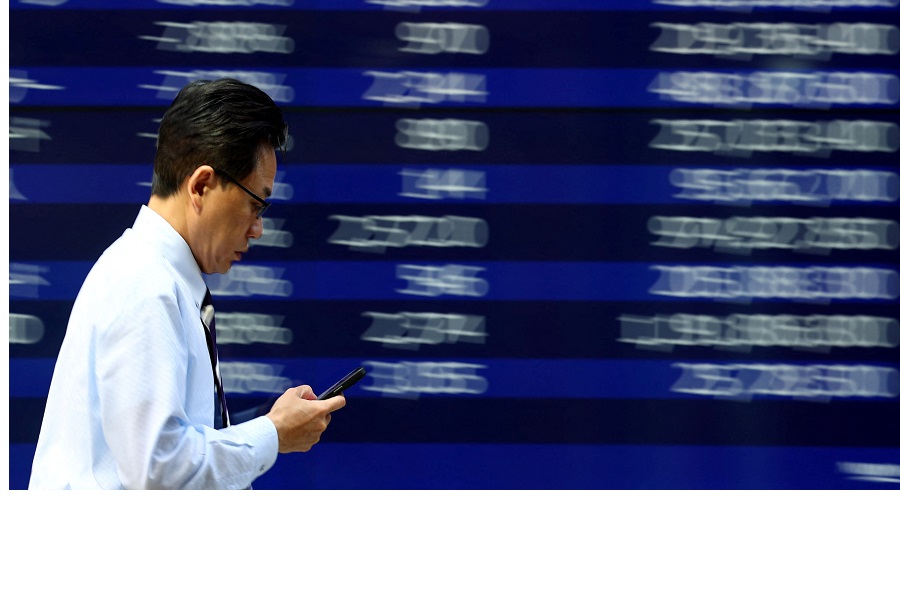Indiaís Financial Markets in the Era of Donald Trumpís Presidency: What to Expect in Stocks, Commodities, and Currency Markets

With Donald Trump back in the Oval Office, India’s financial markets are abuzz with anticipation. As a leader known for his unconventional policies, particularly on trade, foreign relations, and economic matters, Trump’s presidency is likely to shape global markets in ways that India cannot ignore. Here’s a closer look at how Indian stocks, commodities, and currency markets are responding and may continue to evolve in this new era.
Market Reactions on November 6, 2024
As early U.S. election results pointed toward a Trump lead, India’s financial markets reacted notably.
Stock Market Performance
The BSE Sensex and NSE Nifty 50 indices both experienced gains, rising by approximately 0.73% and 0.77%, respectively. This uptick was primarily driven by the Information Technology (IT) sector, which surged around 3%. The U.S. services sector's unexpected growth in October positively influenced Indian IT firms, given their significant revenue reliance on the U.S. market. This initial boost underscores investor optimism around continued U.S. demand for Indian IT services.
Currency Market Dynamics
Meanwhile, the Indian rupee faced depreciation pressures, reaching a record low of 84.1950 against the U.S. dollar. This decline was influenced by the strengthening dollar amid the U.S. election developments. The Reserve Bank of India (RBI) likely intervened, selling dollars to prevent a steeper fall, signaling its intent to curb large fluctuations and maintain currency stability. The rupee’s depreciation highlights the challenges of currency volatility in a politically shifting global landscape.
Commodities Market Insights
While specific data on commodities for the day is limited, the strengthening U.S. dollar generally exerts downward pressure on commodity prices, including oil and gold. A stronger dollar makes these commodities more expensive for holders of other currencies, potentially reducing demand and leading to price declines.
Stock Market: Potential for Short-Term Volatility, Long-Term Gains
Historically, Trump’s presidency has been a roller-coaster ride for stock markets worldwide. For India, the resurgence of “America First” policies could mean that sectors like IT and pharmaceuticals, which heavily depend on the U.S. market, will experience both risks and opportunities.
IT Sector Volatility: The Indian IT sector relies on the U.S. for over half its revenue. While Trump’s previous policies raised concerns around visa restrictions, which impacted outsourcing, his focus on technology and infrastructure might open up new opportunities. Indian IT firms might consider diversifying into AI, cloud services, and cybersecurity to align with U.S. needs and mitigate visa dependency.
Defense and Infrastructure Boost: Trump’s interest in bolstering the U.S. defense and infrastructure sectors could be beneficial for India’s defense exporters and infrastructure giants. This could foster collaborations and lead to a surge in defense-related stocks in India.
Pharmaceuticals: Trump has historically pushed for lowering healthcare costs. However, India’s pharmaceutical industry, a major supplier of generic drugs to the U.S., may find a renewed focus on affordable healthcare an advantage. Any shifts toward drug price regulations may initially impact margins, but the demand for cost-effective generics from India could increase.
Commodities: Oil, Gold, and Agricultural Goods
Trump’s energy policies have consistently centered on the U.S. becoming an “energy superpower,” which could impact India’s commodities markets, particularly oil and gold.
Oil Prices and India’s Import Bill: Trump’s push to expand U.S. oil production could keep global oil prices stable or even push them downward, a relief for India as one of the world’s largest oil importers. Lower oil prices would help India manage inflation and reduce the current account deficit, boosting sectors like transportation and manufacturing.
Gold Prices: Gold prices, traditionally a safe-haven asset, often respond to geopolitical uncertainty. Trump’s stance on China, as well as his unpredictable approach to trade agreements, could lead to more volatility in gold prices. For India, the world’s largest gold consumer, price fluctuations could affect import levels, domestic demand, and inflation. Indian investors may view gold as a stable asset in uncertain times, potentially leading to higher investment in gold ETFs and bonds.
Agricultural Commodities: Trump’s trade policies often lead to unexpected tariffs on countries like China. This could create opportunities for India to tap into markets where U.S.-China trade tensions disrupt supply. For instance, Indian soybean or cotton exports could find new demand, supporting these sectors domestically.
Currency Markets: Indian Rupee Faces External Pressures
The dollar-rupee exchange rate is another critical factor for the Indian economy. Trump’s policies could lead to a stronger dollar, as his emphasis on U.S. economic growth could draw investors to dollar-denominated assets.
Rupee Depreciation: If Trump’s policies strengthen the U.S. dollar, the Indian rupee might face depreciation. This would make imports more expensive but could benefit exporters, particularly in IT and pharma, as they would earn more in rupee terms. However, the challenge lies in balancing these benefits with the inflationary pressures of a weaker rupee, particularly in an inflation-sensitive economy like India’s.
Foreign Investment Flows: Trump’s previous presidency saw strong U.S. economic growth, leading to higher interest rates and foreign investment outflows from emerging markets like India. If this pattern continues, India may face foreign portfolio investment (FPI) outflows. A reduction in foreign inflows could pressure the rupee and lead to volatility in the stock market. However, India’s burgeoning status as a global investment hub may help retain investor interest, especially if the government continues with business-friendly reforms.
Impact on Inflation and Trade Deficit: A weaker rupee could widen India’s trade deficit, especially with essential imports like oil. Rising import costs may increase inflationary pressures, a critical factor the Reserve Bank of India will watch closely. Should inflation rise, the RBI might consider interest rate hikes, affecting borrowing costs and slowing domestic consumption.
Long-Term Strategy for Investors
For Indian investors, Trump’s presidency presents a mix of opportunities and challenges. To navigate this period effectively:
Diversify Across Sectors: Investors should consider balancing their portfolios across sectors that could benefit from U.S.-India cooperation, like defense, pharmaceuticals, and IT, while being cautious with sectors heavily dependent on foreign debt or imports, like manufacturing.
Hedge with Safe-Haven Assets: Gold remains a strong option as a hedge against economic uncertainty. Additionally, investors might consider the Indian government’s gold bonds or exchange-traded funds (ETFs) to gain exposure to this asset class.
Monitor Currency Movements: Investors with international exposure should stay updated on dollar-rupee movements and may consider currency-hedged products to mitigate the effects of potential rupee depreciation.
Stay Informed on Geopolitical Developments: Trump’s presidency could bring unpredictable moves on the trade front, especially with China, which indirectly impacts India. Staying informed on these developments can help investors respond proactively to changing market dynamics.
Conclusion
Donald Trump’s return to the U.S. presidency is set to shape India’s financial markets across stocks, commodities, and currency. Today’s initial reactions underscore the interconnectedness of global political events and domestic economic indicators. While initial volatility is likely, the long-term outlook remains cautiously optimistic for sectors that can adapt to shifts in U.S. policy. Indian investors and businesses can leverage this era by staying agile, diversifying investments, and focusing on sectors well-positioned to benefit from U.S.-India collaboration. For those who remain informed and proactive, Trump’s presidency might bring more opportunities than challenges in India’s ever-evolving financial landscape.




















